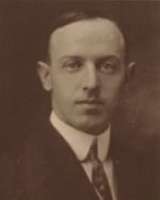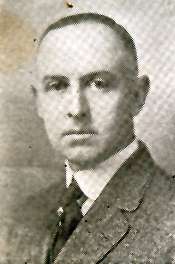John Paul Jr. (judge)
| John Paul Jr. | |
|---|---|
 | |
| Judge of the United States District Court for the Western District of Virginia | |
|
In office January 14, 1932 – August 1, 1958 | |
| Appointed by | Herbert Hoover |
| Preceded by | Henry C. McDowell |
| Succeeded by | Theodore Roosevelt Dalton |
| United States Attorney for the Western District of Virginia | |
|
In office 1929 – January 14, 1932 | |
| Appointed by | Herbert Hoover |
| Preceded by | Joseph C. Shaffer |
| Succeeded by | Joseph C. Shaffer |
| Member of the U.S. House of Representatives from Virginia's 7th district | |
|
In office December 15, 1922 - March 3, 1923 | |
| Preceded by | Thomas W. Harrison |
| Succeeded by | Thomas W. Harrison |
| Member of the Virginia Senate from the 8th district | |
|
In office January 14, 1920 – December 15, 1922 | |
| Preceded by | George N. Conrad |
| Succeeded by | Ward Swank |
|
In office January 10, 1912 – January 12, 1916 | |
| Preceded by | George B. Keezell |
| Succeeded by | George N. Conrad |
| Personal details | |
| Born |
John Paul Jr. December 9, 1883 Harrisonburg, Virginia, U.S. |
| Died |
February 13, 1964 (aged 80) Ottobine, Virginia, U.S. |
| Political party | Republican |
| Alma mater |
Virginia Military Institute (B.A.) University of Virginia (LL.B.) |
| Occupation | Lawyer, politician |
| Military service | |
| Allegiance |
|
| Service/branch | United States Army |
| Years of service | 1918–1919 |
| Unit | Field Artillery Corps |
| Battles/wars | World War I |
John Paul Jr. (December 9, 1883 – February 13, 1964) was a U.S. Representative from Virginia, and later a United States federal judge.[1]
Early and family life
This younger John Paul was born in Harrisonburg, Virginia in 1883, soon after his father, John Paul (1839–1901), had become a United States federal judge after nomination by Republican President Chester A. Arthur and confirmation by the Senate. The senior John Paul had served as a Confederate soldier, but after Congressional Reconstruction had become a Readjuster Democrat and in 1880 won election as United States Representative from Virginia's 7th congressional district, defeating both a Republican and a Democrat. He and his wife, the former Katherine Seymour Green (1847-1927), had three daughters (Katherine, Virginia and Lilian) before the birth of this son; their first son, John Rockingham Paul (1877-1879), had not survived infancy. The family came to include two more sons, Charles Green Paul (1886-1943) and Garret Seymour Paul (1888-1960), and lived on their farm in Ottobine, Rockingham County, Virginia.
Young John Paul attended private and public schools. Despite his father's death in 1901, he graduated from the Virginia Military Institute in Lexington in 1903, with a degree in civil engineering, and taught there the following year. The University of Virginia School of Law in Charlottesville awarded him a Juris Doctor degree in 1906.
In 1914, John Paul married Frances Danenhower (1887-1919), but they had no surviving children. After he returned to Harrisonburg, he lived with his mother and unmarried sister Virginia M. Paul (1879-1933), a schoolteacher and librarian. John Paul Jr. married Alice Kelly Taylor (1883-1960) in 1939, and was again widowed.
Early legal career and military service
After admission to the Virginia bar in 1906, John Paul continued in his father's footsteps by setting up a private general legal practice in Harrisonburg, which he continued for a decade until World War I began.
A Republican in a state dominated by the Byrd Machine, Paul nonetheless was elected to the Virginia State Senate, and served two terms from 1911 to 1915, developing a cordial relationship with fellow state senator Harry F. Byrd, who would soon take over the Democratic organization of U.S. Senator Thomas Staples Martin. However, Democrats defeated Paul in races for a seat in the U.S. House of Representatives in 1916 and 1918.
Not long after the U.S. entered the First World War, Paul joined the United States Army, as did at least one of his brothers. Major John Paul served with the 313th Field Artillery of the 155th Field Artillery Brigade, and participated in the American Expeditionary Force from May 1918 until May 1919.
When Paul returned to Harrisonburg, voters again elected him to the State Senate (a part-time position), where he served from 1919 to 1922. From 1919 to 1923, Paul also served Harrisonburg's city attorney. In 1920, Paul successfully contested as a Republican the election of Democrat Thomas W. Harrison to the Sixty-seventh Congress from Virginia's 7th congressional district, but Harrison presented credentials as a Member-elect and served from March 4, 1921, to December 15, 1922. Paul successfully contested this election and was awarded the seat, but as a lame duck. He only served from December 15, 1922, to March 3, 1923, because Harrison won the November, 1922 contest for the seat in the Sixty-eighth Congress, effectively regaining the seat at the ballot box.
Paul also served as special assistant to the Attorney General of the United States, Harry M. Daugherty, in 1923 and 1924, before resuming his private legal practice from 1924 to 1929. Paul was also a delegate to the Republican National Conventions in 1912, 1916, 1920, and 1924. In that year, he became the United States Attorney for the Western District of Virginia, and continued in that position until 1932.
Federal judicial service

President Herbert Hoover on December 15, 1931, nominated Paul to a seat on the United States District Court for the Western District of Virginia vacated by Henry C. McDowell. The United States Senate confirmed Paul's nomination on January 11, 1932, and he received his commission on January 14, 1932. When he assumed the bench, he was the only judge in the Western District, which included seven courthouses and ranged from Cumberland Gap through the Shenandoah Valley to Winchester, Virginia.
Judge Paul presided over the 50-day trial of the Franklin County moonshine conspiracy, said to be the longest trial in Virginia history to that time.[2]
A second judgeship for the district was added in 1938. After the failed nomination of Floyd H. Roberts, and the brief tenure of Professor Armistead Mason Dobie (who went on to the Court of Appeals), the position that was ultimately filled by Judge Alfred D. Barksdale, with whom Paul worked as the only two judges for the District for over 17 years.
To Paul and his colleagues fell the task of implementing the Supreme Court's decision in Brown v. Board of Education in desegregation lawsuits in the Western District of Virginia. In August, 1956, Judge Paul issued a historic ruling ordering the desegregation of the Charlottesville public schools, and which soon set off Massive Resistance as by-now-U.S. Senator Harry F. Byrd vehemently disagreed with the U.S. Supreme Court ruling, and state officials obstructed its implementation.[3] Judge Paul also sat on the 3-judge panel that ordered the integration of the graduate schools of the University of Virginia in the Gregory Swanson case.[4] He also ordered the desegregation of the schools in Grayson County, and Warren County.[5]
A. Willis Robertson, despite his affiliation with Byrd, called Judge Paul a dispenser of even handed justice.[6]
Paul served as chief judge from 1948 to 1958. He announced his retirement and took senior status on August 1, 1958 (as Byrd also was exploring a tentative decision to retire), but also announced that he would continue to sit until a successor was appointed. President Dwight D. Eisenhower nominated Theodore Roosevelt Dalton, who also opposed Massive Resistance and who had recently lost a bid to become Virginia's first Republican governor since Congressional Reconstruction, to replace him, and he was confirmed in 1960.
Judge Paul continued his federal service as a senior judge on an assigned basis as well as farmed in Rockingham County, Virginia. In 1961, Paul donated part of his family's farm to become the Paul State Forest.[7]
Death and legacy
Judge Paul died in his sleep on his home in Ottobine, Virginia on February 13, 1964, and was interred in Harrisonburg's Woodbine Cemetery.[8] He had outlived his siblings as well as two wives, but the previous June, his brother Seymour's son John Abbott Paul had married fellow Harrisonburg High School graduate Bonnie Dold Lineweaver at Harrisonburg's Episcopal Church, and she would go on to serve in the Virginia House of Delegates.
Notes and references
- ↑ New York Times obituary of Feb. 15, 1964 available at www.nytimes.com/1964/02/15/john-paul-exjudge-80-dies.html
- ↑ Greer, T. Keister (2002). The Great Moonshine Conspiracy Trial of 1935. History House. ISBN 0-9722355-0-7.
- ↑ New York Times obituary
- ↑ "Richmond Times-Dispatch excerpt, September 20, 1950". University of Virginia. Retrieved February 17, 2008.
- ↑ See Goins v. County School Bd. of Grayson County, 186 F. Supp. 753 (W.D. Va. 1960); School Bd. of Warren County v. Kilby, 259 F.2d 497 (4th Cir. 1958); School Bd. of City of Charlottesville, Va. v. Allen, 240 F.2d 59 (4th Cir. 1957).
- ↑ James W. Ely, Jr., The Crisis of Conservative Virginia (University of Tennessee Press, 1976), p. 192
- ↑ "Ottobine's State Forest". Ottobine.com. Retrieved October 22, 2007.
- ↑ findagrave No. 53958244
Sources
- "John Paul Jr". Biographical Directory of the United States Congress.
- John Paul Jr. at the Biographical Directory of Federal Judges, a public domain publication of the Federal Judicial Center.
- John Paul Jr. at The Virginia Elections and State Elected Officials Database Project, 1776-2007
- John Paul Jr. at Find a Grave
External links
| U.S. House of Representatives | ||
|---|---|---|
| Preceded by Thomas W. Harrison |
Member from Virginia's 7th congressional district 1922–1923 |
Succeeded by Thomas W. Harrison |
| Legal offices | ||
| Preceded by Henry C. McDowell |
Judge of the U.S. District Court for the Western District of Virginia 1932–1958 |
Succeeded by Theodore Roosevelt Dalton |